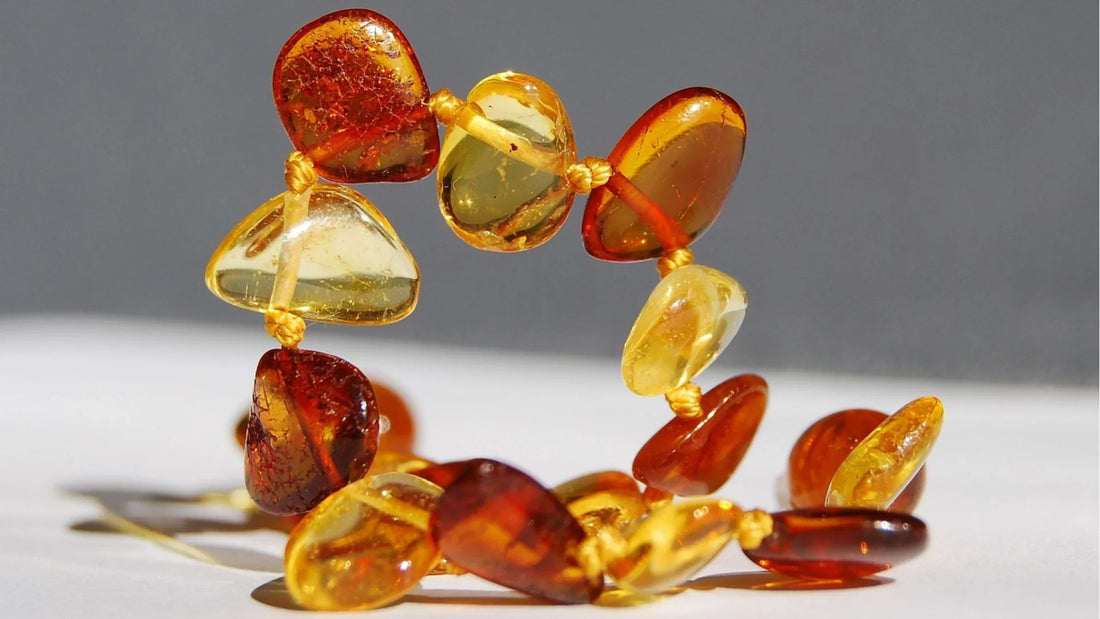Amber Teething Necklaces: Do They Really Work or Are They Dangerous?
Amber Teething Necklaces: What Are They and What Are They For?
Amber teething necklaces are jewelry made from small pieces of natural amber, a fossilized resin often found in the Baltic region. These pieces of jewelry are designed to be worn by babies as a natural remedy to relieve the discomfort associated with the appearance of their first teeth because it is believed that the baby's body heat causes the amber to release a substance called succinic acid , which is said to have anti-inflammatory and analgesic properties.

False myths
Unfortunately, there are several false myths surrounding amber necklaces .
First of all, the amber teething necklaces that are on the market are never made of pure amber . Amber is a very expensive resin; therefore, a necklace should cost around 200/300€ if made of pure Baltic amber.
The second false myth is the one related to succinic acid , the “ spirit of amber ”. In addition to the lack of scientific evidence to prove its anti-inflammatory and analgesic properties , this acid can only be released at high temperatures. Therefore, as confirmed by a recent study , the heat of the human body is not able to make amber release this substance.

Risks associated with amber tooth necklaces
Suffocation
Retailers confirm that the necklaces have a safety lock with a point of failure. However, a test conducted by Canadian researchers and published in the journal Pediatric Child Health states that 10 of 15 necklaces did not open when an average force was applied to occlude a child's airway.
Precisely because amber necklaces are highly risky for choking the child, they are not recommended by the American Academy of Pediatrics in America and by the federal department of public health in Canada. In addition, in Switzerland and France they can no longer be sold in pharmacies.
Ingestion
The second risk associated with amber necklaces for teething is the risk that the child will eat the stones if the necklace breaks. In fact, the period of the first teeth also coincides with the oral period of the child who experiments and discovers everything he finds through the mouth.
Traders report that the stones are locked one by one on the thread; therefore, in case of breakage they cannot be removed and in that case only one would fall out. However, a single pearl could be enough to suffocate the child.
Recognizing the signs of choking and knowing how to intervene quickly with the disobstruction maneuvers can save the life of your child and that of other children in difficulty. In the highly practical course " Pediatric Disobstruction Maneuvers, Cardiopulmonary Resuscitation Maneuvers and Safe Cuts " Dr. Pillar Nannini will help you discover how to intervene immediately and effectively in the event of choking.

